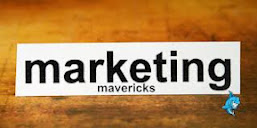The Art of Symbolism: The Profound Craftsmanship of Logo Designers. In the world of visual communication, logos stand as the most succinct and powerful form of expression. Behind these iconic symbols lies the creative genius of logo designers, the masterminds who distill the essence of brands, concepts, and ideologies into single, memorable marks. This article delves into the realm of logo designers, exploring their indispensable role, skill set, creative process, impact, and the magic they weave into our visual culture.
The Significance of Logo Designers
Logo designers are the architects of visual identity, crafting symbols that encapsulate the core values, ethos, and personality of brands, products, and even entire movements. A well-crafted logo has the power to transcend language barriers and convey a wealth of meaning in a single glance. It is the face of a brand, representing its promise to consumers and evoking emotions that linger in their memories.
The Artistry and Skill Set of Logo Designers
The role of a logo designer is a harmonious blend of artistic finesse, strategic thinking, and acute understanding of human psychology. These professionals possess a repertoire of skills that bring logos to life:
Visual Storytelling: Logo designers are storytellers in their own right, distilling complex narratives into a single, compelling visual. Each element, from color choice to font style, is chosen with precision to convey a specific message.
Simplicity and Distinctiveness: The hallmark of a great logo is its simplicity. Designers strip away extraneous elements, leaving only the essence. A logo should be both memorable and distinct in a cluttered visual landscape.
Typography Expertise: Fonts convey personality and tone. Logo designers meticulously select or customize typography that aligns with a brand's identity and message.
Color Psychology: Colors are emotional triggers. Logo designers delve into the psychology of color, selecting hues that evoke the desired feelings and associations.
Versatility: Logos must function across various platforms and mediums, from digital screens to print materials. Designers ensure that logos remain effective and recognizable regardless of context.
Balance of Form and Function: A logo must not only be aesthetically pleasing but also practical. It should work in grayscale, be scalable, and reproduce accurately in different formats.
Research and Strategy: Designers delve deep into a brand's history, values, and market position before even sketching a concept. Understanding the brand's identity informs the entire design process.
The Creative Process of Logo Designers
Creating a logo is a journey that involves multiple stages:
Discovery: Designers immerse themselves in the brand's universe, grasping its vision, values, and target audience.
Conceptualization: Armed with insights, designers brainstorm ideas, sketching and exploring concepts that align with the brand's essence.
Refinement: The selected concepts are refined and developed further, exploring variations and possibilities.
Feedback and Collaboration: Collaboration with the client is vital. Designers present their concepts and receive feedback, iteratively refining until the perfect mark emerges.
Finalization: Once the design is approved, the logo is finalized, including color schemes, typography, and any accompanying elements.
The Impact of Logo Designers
Logo designers wield influence that extends far beyond aesthetics:
Branding and Recognition: A logo is the visual ambassador of a brand. A well-designed logo creates instant recognition and strengthens the brand's identity.
Consumer Perception: Logos evoke emotions and perceptions. A carefully crafted logo can create positive associations, fostering consumer trust and loyalty.
Cultural Significance: Iconic logos become cultural touchstones, symbols of eras, trends, and societal shifts.
Global Communication: In our interconnected world, logos often transcend language barriers, communicating the brand's essence to diverse audiences without words.
Challenges and Evolution
The path of a logo designer is filled with challenges:
Balancing Creativity and Constraints: Designing within a client's vision while infusing personal creativity can be a delicate balancing act.
Staying Relevant: Logo designers must continually adapt to changing design trends and technologies to stay competitive.
The Future of Logo Design
As technology continues to shape our world, logo design is poised for exciting transformations:
Digital Animation: Animated logos for digital platforms and interactive environments are becoming more popular, adding dynamism to branding.
Responsive Design: Logos that adapt to different digital platforms and screen sizes are becoming crucial in the age of mobile devices.
Personalization: With data-driven insights, logos might dynamically adjust based on user preferences and interactions.
Conclusion
Logo designers are the unsung heroes who translate brands' aspirations into symbols that transcend time and space. Their craft combines artistic sensibility, strategic thinking, and a deep understanding of human psychology. A logo isn't just an image; it's an embodiment of a brand's promise, values, and identity. As technology continues to advance, and visual communication gains prominence, logo designers will remain at the forefront, shaping the way we recognize, perceive, and connect with the world around us.



0 Comments